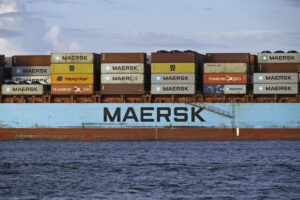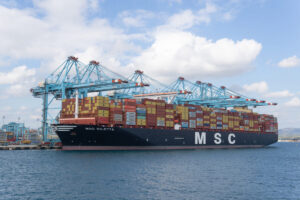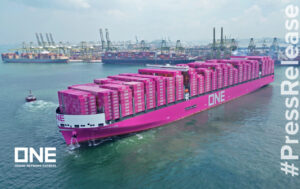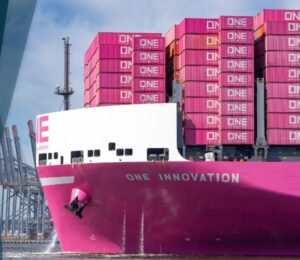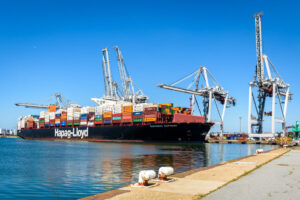Intermodal trade will become more important for US container ports as e-commerce forces importers and exporters to bring their supply chains closer to destination markets, according to the Georgia Ports Authority (GPA).
The US port industry has been through a period of chaos as volumes plummeted at the start of the COVID-19 pandemic in early 2020.
But after lockdown measures were lifted in China there have been record levels of imports into Pacific gateways which has strained the supply chain and caused severe congestion.
Speaking to PTI, Griff Lynch, GPA’s Executive Director, said a “broader acceptance of and reliance on e-commerce” has made cargo owners “adjust supply chains” so that goods can be delivered to population centres quicker.
“These distribution centres must store a larger array of goods and a larger number of them to fulfil the variable demands of e-commerce in a timely manner,” Lynch said.
The congestion on the West Coast has led to some suggestions that cargo will divert from the traditional entry points to the US market in Los Angeles, Long Beach and Oakland to the East Coast.
This is despite the inevitable costs of moving cargo inland, but Lynch explained that the shift from a “just in time mindset to just in case” makes the longer transit time from Asia to the US East Coast less of a factor.
“This shift is increasing demand on intermodal rail from East Coast ports to inland destinations.”
There has been a “gradual shift” from the West Coast to the East Coast in the past five years, with the pandemic and e-commerce boom accelerating the trend, according to Lynch, who pointed out that online sales had increased by 32% in 2020 year-on-year (YoY).
“With the incredible inconsistency of cargo demand and resulting congestion, some shippers who only used West Coast ports now see the efficiency of having assets on both coasts.”
Building for the future
In March 2021, the GPA broke its TEU monthly volume record with an YoY increase of 48% and predicted its yearly traffic will top five million TEU for the first time in a sign of its ascent as a major hub for containerised goods.
Additionally, it approved a raft of improvement projects designed to increase the Port of Savannah’s capacity by 20%. According to Lynch, this is consistent with the GPA’s “long maintained” investment philosophy “aimed at keeping annual capacity at 20% above current demand” which “avoids congestion and ensures the free flow of cargo”.
“Specifically, GPA’s Savannah capital improvement projects are designed to increase capacity across all phases of our terminal services.
“Presently, the straightening of Berth 1 at Garden City will enable the port to serve four 15,000+ TEU vessels, plus three additional ships, simultaneously.
“Similarly, the purchase of eight new ship-to-shore (STS) cranes will all GPA to serve more of the largest vessels now calling the US East Coast.”
Spreading out inland
As part of the expansion of the Port of Savannah, the GPA purchased 20 new rubber-tyred gantry (RTG) cranes, a deal which had to be expedited because of a surge in demand. The Konecranes-built RTGs are expected to arrive by mid-year 2023.
The GPA is also increasing its container stacking space by transitioning land within its existing footprint, as well as utilising 145 acres of newly acquired land.
Lynch said the new space, which could become feasible as soon as September 2021, will allow the GPA to “better accommodate” the current influx of cargo, as well as meet future consumer demands.
As well as that, Lynch claimed the Savannah area has enough currently undeveloped land to accommodate 100 million sqf of new industrial space within 30 miles of the Port, which “provides greater opportunity for near-port development” than any other major US container gateway.
Lynch added that the “recent expansion of our truck gates and a doubling of our intermodal rail lift capacity with the Mason Mega Rail Terminal will keep container trade moving beyond our gates and to important inland destinations.”


